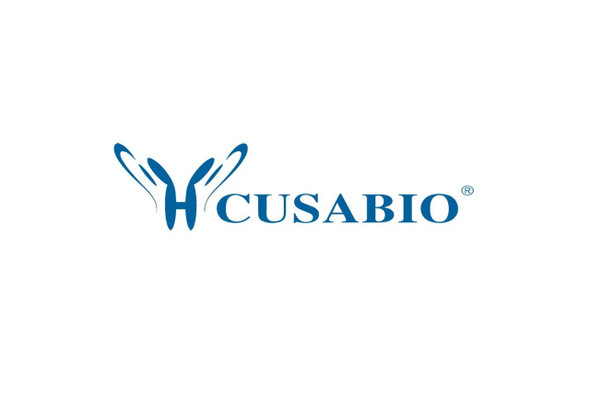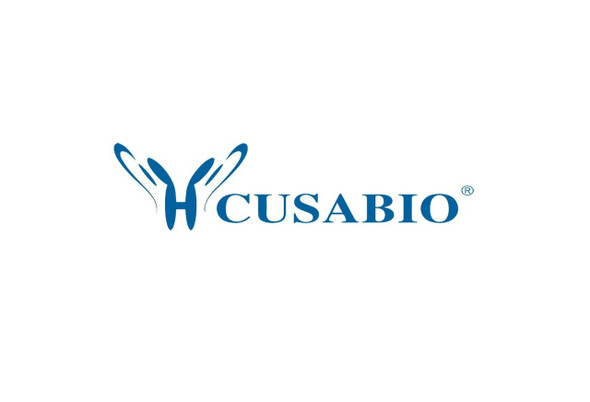Cusabio Human Recombinants
Recombinant Human Programmed cell death protein 6 (PDCD6) | CSB-EP017672HU
- SKU:
- CSB-EP017672HU
- Availability:
- 13 - 23 Working Days
Description
Recombinant Human Programmed cell death protein 6 (PDCD6) | CSB-EP017672HU | Cusabio
Alternative Name(s): Apoptosis-linked gene 2 protein;Probable calcium-binding protein ALG-2
Gene Names: ALG2
Research Areas: Apoptosis
Organism: Homo sapiens (Human)
AA Sequence: MAAYSYRPGPGAGPGPAAGAALPDQSFLWNVFQRVDKDRSGVISDTELQQALSNGTWTPFNPVTVRSIISMFDRENKAGVNFSEFTGVWKYITDWQNVFRTYDRDNSGMIDKNELKQALSGFGYRLSDQFHDILIRKFDRQGRGQIAFDDFIQGCIVLQRLTDIFRRYDTDQDGWIQVSYEQYLSMVFSIV
Source: E.coli
Tag Info: N-terminal GST-tagged
Expression Region: 1-191aa
Sequence Info: Full Length
MW: 48.9 kDa
Purity: Greater than 90% as determined by SDS-PAGE.
Relevance: Calcium-binding protein required for T-cell receptor-, Fas-, and glucocorticoid-induced cell death. May mediate Ca2+-regulated signals along the death pathway . Calcium-dependent adapter necessary for the association between PDCD6IP and TSG101. Interaction with DAPK1 can accelerate apoptotic cell death by increasing caspase-3 activity. May inhibit KDR/VEGFR2-dependent angiogenesis; the function involves inhibition of VEGF-induced phosphoprylation of the Akt signaling pathway. Ses to play a role in the regulation of the distribution and function of MCOLN1 in the endosomal pathway. Isoform 2 has a lower Ca2+ affinity than isoform 1. Isoform 1 and, to a lesser extend, isoform 2, can stabilize SHISA5.5 Publications
Reference: Ganjei J.K., D'Adamio L.Urcelay E., Ibarreta D., Parrilla R., Ayuso M.S. Complete sequencing and characterization of 21,243 full-length human cDNAs.Ota T., Suzuki Y., Nishikawa T., Otsuki T., Sugiyama T., Irie R., Wakamatsu A., Hayashi K., Sato H., Nagai K., Kimura K., Makita H., Sekine M., Obayashi M., Nishi T., Shibahara T., Tanaka T., Ishii S. , Yamamoto J., Saito K., Kawai Y., Isono Y., Nakamura Y., Nagahari K., Murakami K., Yasuda T., Iwayanagi T., Wagatsuma M., Shiratori A., Sudo H., Hosoiri T., Kaku Y., Kodaira H., Kondo H., Sugawara M., Takahashi M., Kanda K., Yokoi T., Furuya T., Kikkawa E., Omura Y., Abe K., Kamihara K., Katsuta N., Sato K., Tanikawa M., Yamazaki M., Ninomiya K., Ishibashi T., Yamashita H., Murakawa K., Fujimori K., Tanai H., Kimata M., Watanabe M., Hiraoka S., Chiba Y., Ishida S., Ono Y., Takiguchi S., Watanabe S., Yosida M., Hotuta T., Kusano J., Kanehori K., Takahashi-Fujii A., Hara H., Tanase T.-O., Nomura Y., Togiya S., Komai F., Hara R., Takeuchi K., Arita M., Imose N., Musashino K., Yuuki H., Oshima A., Sasaki N., Aotsuka S., Yoshikawa Y., Matsunawa H., Ichihara T., Shiohata N., Sano S., Moriya S., Momiyama H., Satoh N., Takami S., Terashima Y., Suzuki O., Nakagawa S., Senoh A., Mizoguchi H., Goto Y., Shimizu F., Wakebe H., Hishigaki H., Watanabe T., Sugiyama A., Takemoto M., Kawakami B., Yamazaki M., Watanabe K., Kumagai A., Itakura S., Fukuzumi Y., Fujimori Y., Komiyama M., Tashiro H., Tanigami A., Fujiwara T., Ono T., Yamada K., Fujii Y., Ozaki K., Hirao M., Ohmori Y., Kawabata A., Hikiji T., Kobatake N., Inagaki H., Ikema Y., Okamoto S., Okitani R., Kawakami T., Noguchi S., Itoh T., Shigeta K., Senba T., Matsumura K., Nakajima Y., Mizuno T., Morinaga M., Sasaki M., Togashi T., Oyama M., Hata H., Watanabe M., Komatsu T., Mizushima-Sugano J., Satoh T., Shirai Y., Takahashi Y., Nakagawa K., Okumura K., Nagase T., Nomura N., Kikuchi H., Masuho Y., Yamashita R., Nakai K., Yada T., Nakamura Y., Ohara O., Isogai T., Sugano S.Nat. Genet. 36:40-45(2004)
Storage: The shelf life is related to many factors, storage state, buffer ingredients, storage temperature and the stability of the protein itself. Generally, the shelf life of liquid form is 6 months at -20?/-80?. The shelf life of lyophilized form is 12 months at -20?/-80?.
Notes: Repeated freezing and thawing is not recommended. Store working aliquots at 4? for up to one week.
Function: Calcium sensor that plays a key role in processes such as endoplasmic reticulum (ER)-Golgi vesicular transport, endosomal biogenesis or membrane repair. Acts as an adapter that bridges unrelated proteins or stabilizes weak protein-protein complexes in response to calcium
Involvement in disease:
Subcellular Location: Endoplasmic reticulum membrane, Peripheral membrane protein, Cytoplasmic vesicle, COPII-coated vesicle membrane, Cytoplasm, Nucleus, Endosome
Protein Families:
Tissue Specificity:
Paythway:
Form: Liquid or Lyophilized powder
Buffer: If the delivery form is liquid, the default storage buffer is Tris/PBS-based buffer, 5%-50% glycerol. If the delivery form is lyophilized powder, the buffer before lyophilization is Tris/PBS-based buffer, 6% Trehalose, pH 8.0.
Reconstitution: We recommend that this vial be briefly centrifuged prior to opening to bring the contents to the bottom. Please reconstitute protein in deionized sterile water to a concentration of 0.1-1.0 mg/mL.We recommend to add 5-50% of glycerol (final concentration) and aliquot for long-term storage at -20?/-80?. Our default final concentration of glycerol is 50%. Customers could use it as reference.
Uniprot ID: O75340
HGNC Database Link: HGNC
UniGene Database Link: UniGene
KEGG Database Link: KEGG
STRING Database Link: STRING
OMIM Database Link: OMIM









